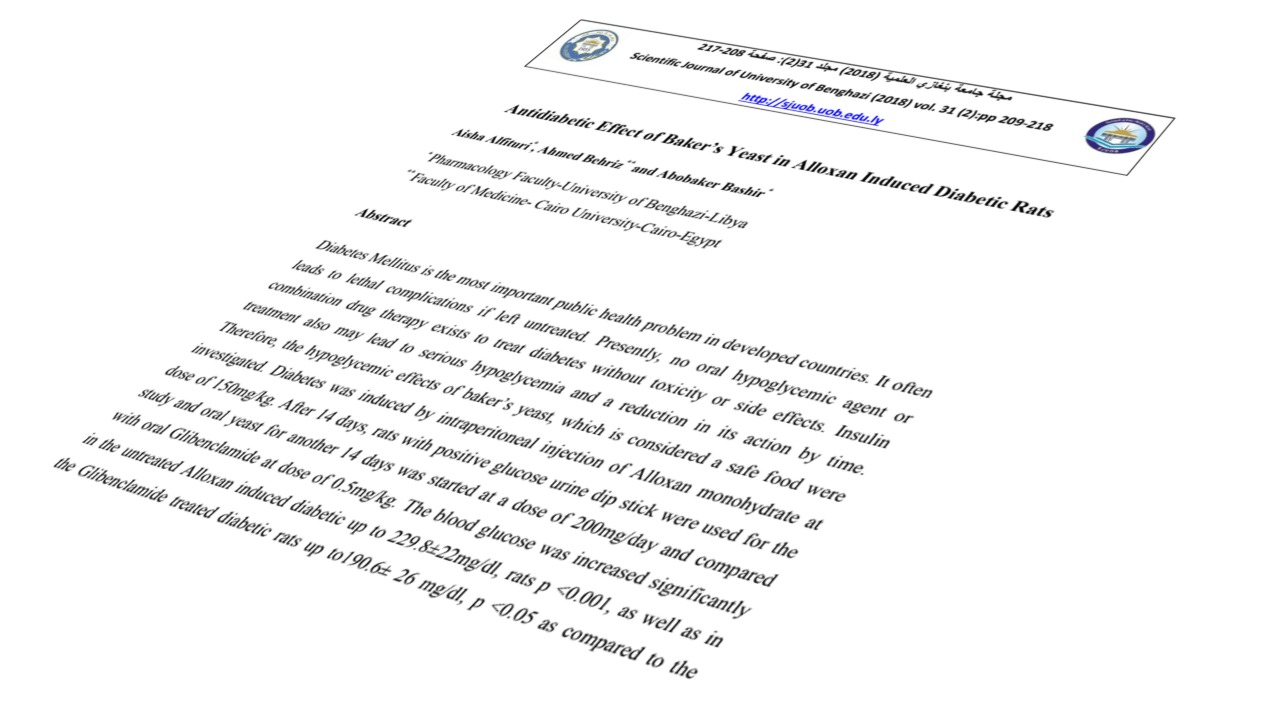Antidiabetic Effect of Baker’s Yeast in Alloxan Induced Diabetic Rats
DOI:
https://doi.org/10.37376/sjuob.v31i2.684Keywords:
Baker’s yeast, Diabetes Mellitus, Glucose signal transduction, insulin-mimetic phosphoinositolglycan peptide, ChromiumAbstract
Diabetes Mellitus is the most important public health problem in developed countries. It often leads to lethal complications if left untreated. Presently, no oral hypoglycemic agent or combination drug therapy exists to treat diabetes without toxicity or side effects. Insulin treatment also may lead to serious hypoglycemia and a reduction in its action by time. Therefore, the hypoglycemic effects of baker’s yeast, which is considered a safe food were investigated. Diabetes was induced by intraperitoneal injection of Alloxan monohydrate at dose of 150mg/kg. After 14 days, rats with positive glucose urine dip stick were used for the study and oral yeast for another 14 days was started at a dose of 200mg/day and compared with oral Glibenclamide at dose of 0.5mg/kg. The blood glucose was increased significantly in the untreated Alloxan induced diabetic up to 229.8±22mg/dl, rats p <0.001, as well as in the Glibenclamide treated diabetic rats up to190.6± 26 mg/dl, p <0.05 as compared to the control normal group (74.8±5.7mg/dl). It was found that the administration of yeast significantly decreases the blood glucose up to 85.2± 5.9, p≤ 0.001. While no statistically significant decrease in the Glibenclamide treated group. The result showed that brewer's yeast has blood glucose lowering effect in diabetic model
Downloads

Downloads
Published
How to Cite
Issue
Section
License

This work is licensed under a Creative Commons Attribution-NonCommercial-NoDerivatives 4.0 International License.


















